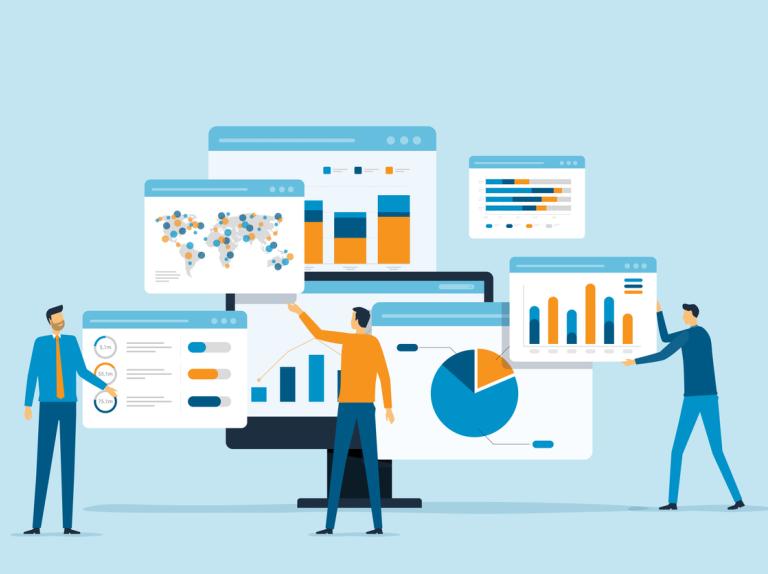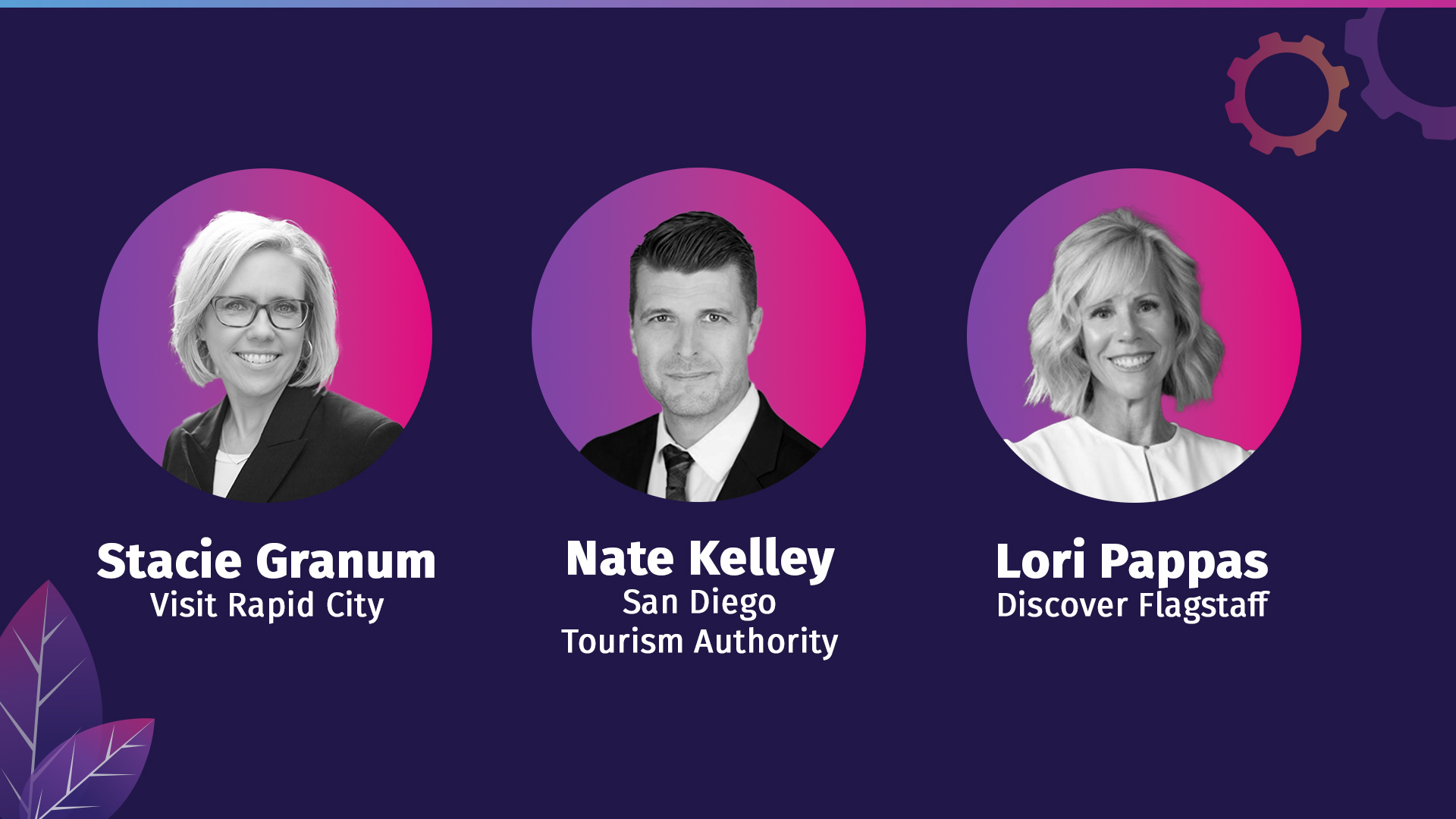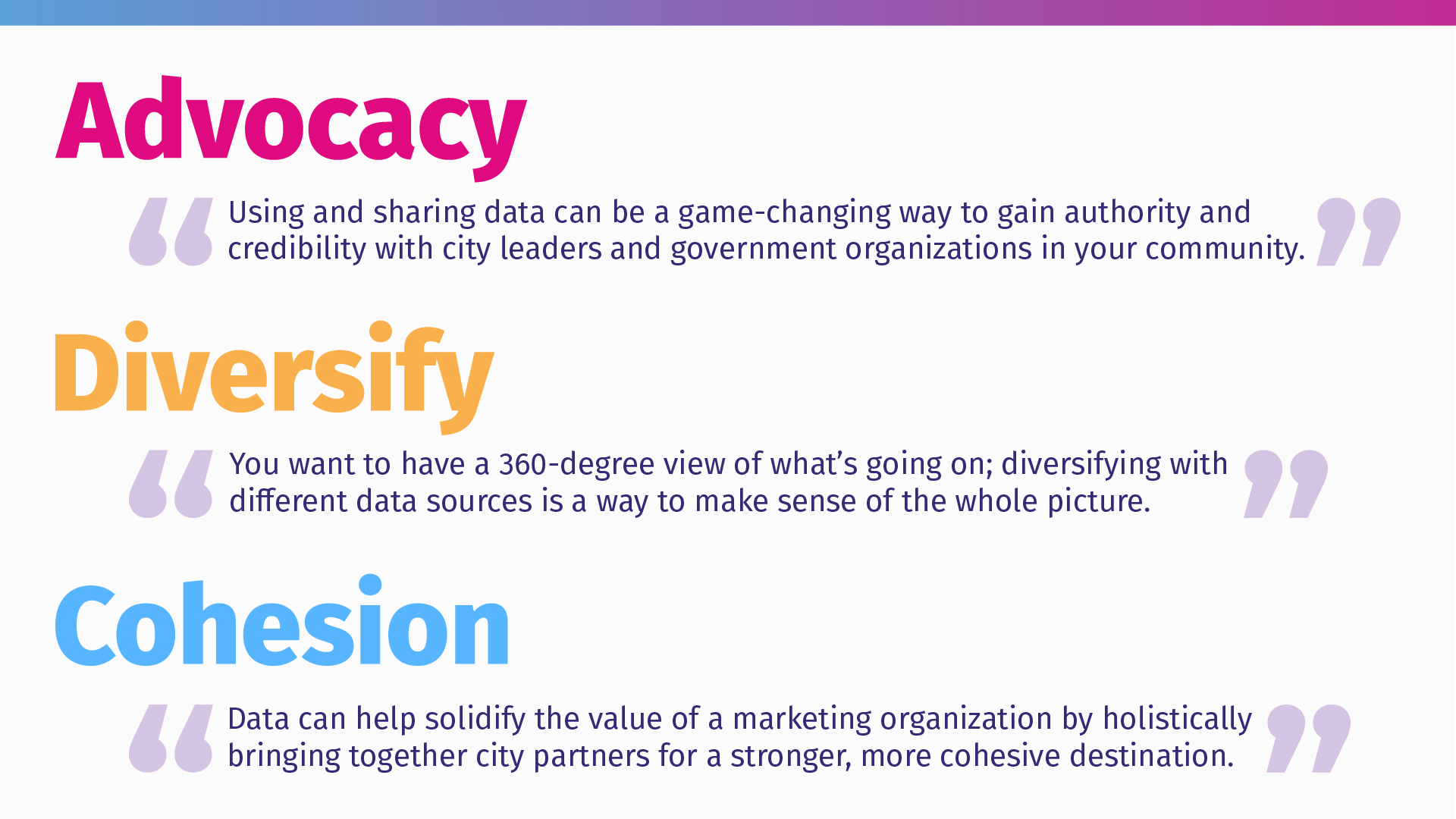
Datafy Discusses: Datafy sits down with three data super-users to discuss ways to master and leverage big data in destination marketing.
Big data is quickly changing the way that DMOs understand visitation and reach their target audiences. Datafy sat down with three leaders in the field to discuss different ways that their organizations are unlocking the power of big data, and to share insights on how their counterparts at other destinations can become data super-users.

Stacie Granum, CDME, Chief Strategy Officer at Visit Rapid City:
“Advocacy is so critical in this industry; Using and sharing data can be a game-changing way to gain authority and credibility with city leaders and government organizations in your community.”
Recent CDME Stacie Granum focuses on data-driven insights to develop growth initiatives and strategic direction for Visit Rapid City. In the webinar, Stacie shared some of her best practices for how DMOs can leverage data to develop a strong advocacy arm of their organization.
- Using data to build relationships and drive advocacy: When local partners don’t have access to data, DMOs can use their data to start connecting more with city leaders and community organizations. Data puts DMOs in a position where they can help other city organizations understand visitation and trends in their area, allowing them to make smarter, more strategic decisions. Doing so can position your DMO as the authority on tourism information and give you a seat at the table with other essential city and government organizations.
- Provide content to the numbers: Being the data hub for the region means that a DMO needs to take an educational role in how the data is rolled out. They can help their community partners by working to contextualize the data so that one number or statistic isn’t taken out of context. This needs to be an educational process to connect the dots and help them understand the larger story that the data is telling.
Nate Kelley, Director of Research at San Diego Tourism Authority:
“You want to have a 360-degree view of what’s going on; diversifying with different data sources is a way to make sense of the whole picture.”
As the Director of Research at San Diego Tourism Authority, Nate is an economist who knows a thing or two about how DMOs can leverage data to meet their goals – and he didn’t hold back when sharing some of his top tips:
- The more data sources, the better: By diversifying your data sources, you are, by definition, expanding your sample size. This means that you can rely on your results with more confidence. What does this mean for a DMO? It can look like supplementing a bi-annual visitor profile study with Datafy’s geolocation and spending data. Diversifying your data sources allows you to make sure that they’re all telling the same story to build the high-level insights that your destination needs.
- Use data to identify bigger trends and market shifts: Most people are less worried about the exact numbers, and more interested in the behavior - and data can give you the ability to see how you’re trending. Even if the data doesn’t match up exactly, it will help gut check what’s really going on in your destination.
- Data can (and should) change: Data is not a hard number. Much like the U.S. job report, destination data should constantly change and be revised as more data is acquired. It’s important to acknowledge that data is an estimate based on the sample in order to avoid false precision.

Lori Pappas, CDME, Marketing and Media Relations Manager at Discover Flagstaff:
“Data can help solidify the value of a marketing organization by holistically bringing together city partners for a stronger, more cohesive destination.”
With expertise in media, branding, advertising and communications, Lori is always uncovering new ways that data can be used to develop and share her destination’s story and messaging. Read on for some of her favorite ways to do so:
- Using data to hone in on target audiences: In a crowded and competitive space, visitors expect personalized experiences. Once a destination creates those experiences, using data allows us to construct, segment and enhance the target audiences that we want to reach with this messaging. This type of laser focus on the audiences most likely to convert would not be possible without leveraging big data information.
- Benchmarking organizational goals with data: Analyzing the data will identify opportunities and help set organizational goals. For example, data can show you the impact of converting day-trippers to overnight visitors or play a part in shifting peak visitation to a more needed time– an insight that may become a central pillar of your organization’s strategies and goals moving forward.
- Using data for provable ROI through attribution: Leveraging the data to show provable the ROI through attribution can be incredibly helpful when justifying budgetary decisions - and, in some cases, to show cause for additional funding. Sharing verifiable results and statistics, such as exceeding click-through goals and/or visitor days directly resulting from campaign impressions, is incredibly impactful in both scenarios.
Datafy would like to thank these three data trailblazers for sharing their valuable insights and expertise into how DMOs can leverage the power of big data to maximize their marketing strategies.


